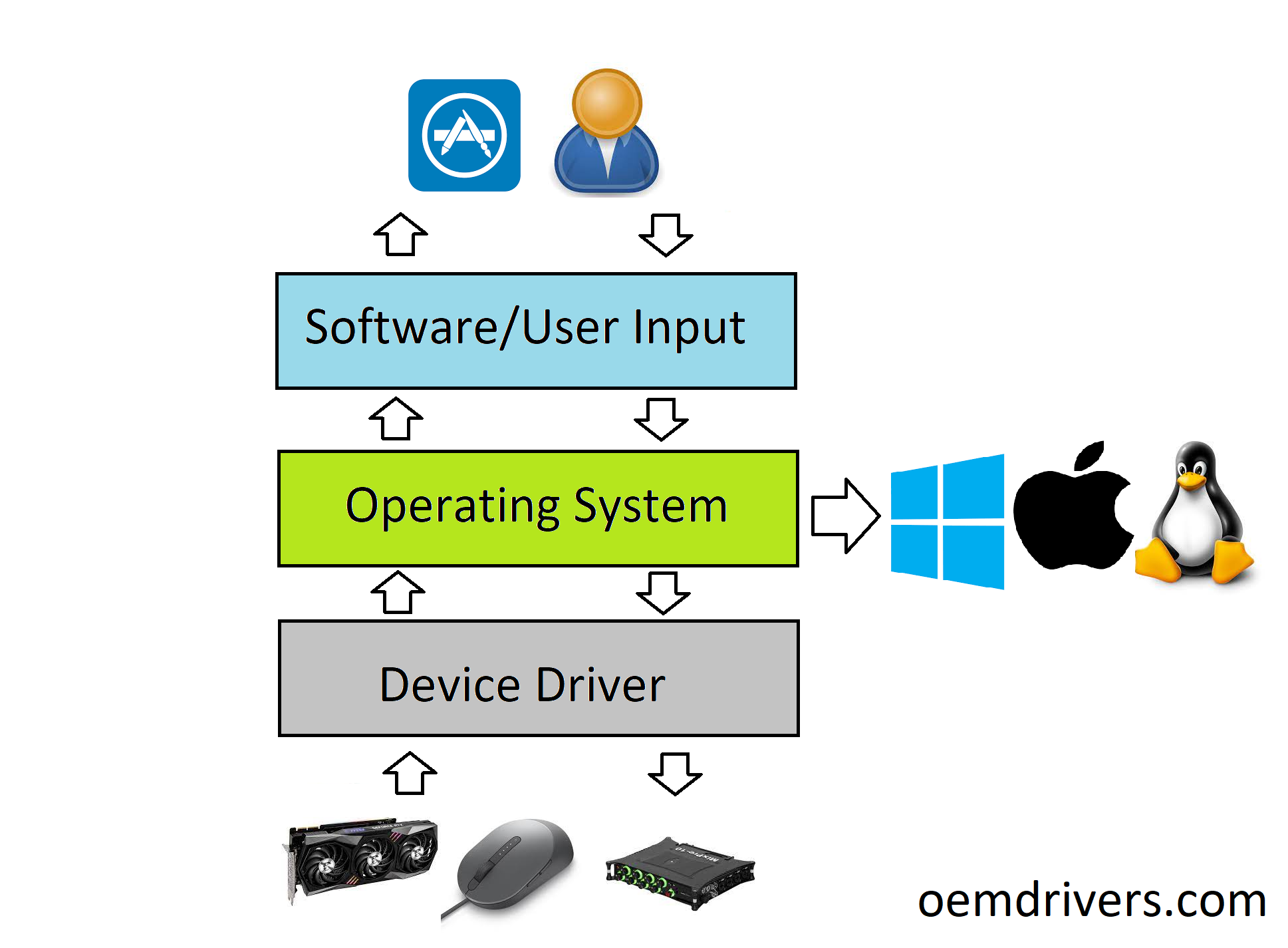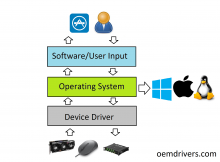What is a device driver?
This is a common question. Put simply a device driver is a piece of software that allows you to use a piece of hardware such as a Printer or Camera with an operating system such as Windows, macOS or Linux. Without this usually small piece of software the Operating System does know how to handle the device. Most modern operating systems will automatically install device for a device when it is plugged in by using an ID that is unique to that device model.
More technically a driver typically communicates with the device through the computer bus or communications subsystem to which the hardware connects. When a calling program invokes a routine in the driver, the driver issues commands to the device. Once the device sends data back to the driver, the driver may invoke routines in the original calling program. Drivers are hardware-dependent and operating-system-specific. They usually provide the interrupt handling required for any necessary asynchronous time-dependent hardware interface.

Virtual Device Drivers:
Virtual device drivers represent a particular variant of device drivers. They are used to emulate a hardware device, particularly in virtualization environments, for example when a DOS program is run on a Microsoft Windows computer or when a guest operating system is run on, for example, a Xen host. Instead of enabling the guest operating system to dialog with hardware, virtual device drivers take the opposite role and emulate a piece of hardware, so that the guest operating system and its drivers running inside a virtual machine can have the illusion of accessing real hardware. Attempts by the guest operating system to access the hardware are routed to the virtual device driver in the host operating system as e.g. function calls. The virtual device driver can also send simulated processor-level events like interrupts into the virtual machine
